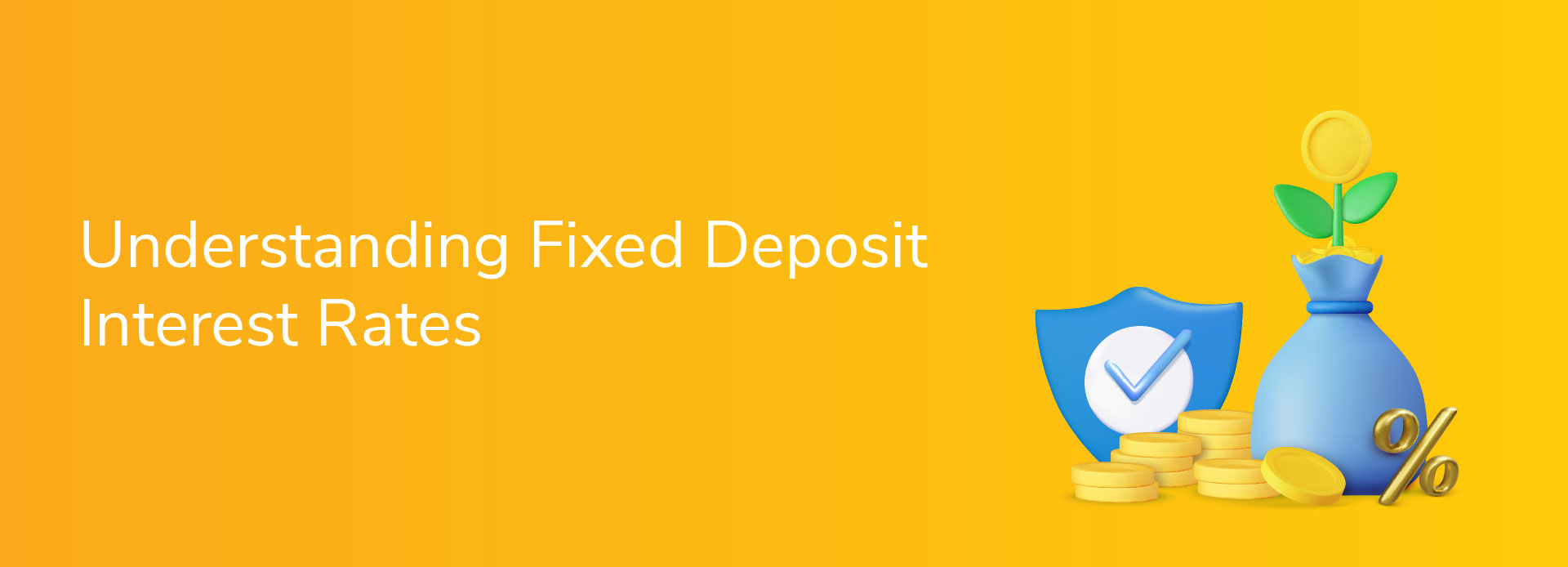
Understanding Fixed Deposit Interest Rates: A Comprehensive Guide
22 July 2024 | By INDIE
When choosing a fixed deposit scheme, the interest rate is one of the crucial factors to consider. The math here is simple – the higher the interest rate offered, the higher your returns. But how much does the interest rate affect your investment? How is the interest rate calculated and how to choose the best fixed deposit based on the interest rate? Read on to learn these answers.
What is a fixed deposit interest rate?
A fixed deposit interest rate refers to the predetermined rate at which a financial institution like a bank or Non-Banking Financial Company (NBFC) pays you returns on your fixed deposit investment. This rate is fixed at the time of opening the fixed deposit account for a specific tenure.
The interest rate offered by these institutions varies based on factors like the investment amount, lock-in period, and prevailing market rates. No matter how the market interest rates fluctuate during the fixed deposit tenure, the original rate determined at the time of account opening remains applicable till maturity. This provides stability and assured returns to investors during the lock-in period.
Which bank gives the best FD rates?
When it comes to fixed deposits, INDIE Fixed Deposits by IndusInd Bank offer one of the most lucrative interest rates available. INDIE Fixed Deposits offer an interest rate of up to 7.75% per annum, which is amongst the highest rates offered by any bank or financial institution in the country.
What makes INDIE Fixed Deposits particularly attractive is the flexibility and convenience they provide. You can book a fixed deposit anytime with a minimum deposit of just ₹1,000 from the online FD app and choose from flexible payout options as per your needs.
In addition to high fixed deposit interests, INDIE Fixed Deposits offers an auto-sweep facility where any balance above ₹20,000 in your INDIE Savings Account is automatically converted into an FD in multiples of ₹10,000, ensuring your surplus funds keep earning at higher rates.
Another unique feature is the ability to link your FD to your savings account, allowing you to pay directly from the FD when your savings balance runs low. This seamless integration ensures you never miss out on high FD interest rates while taking care of your liquidity needs.
Tips to maximise FD returns
● Opt for a longer tenure FD as they typically offer higher interest rates than short-term deposits. However, ensure the tenure aligns with your financial goals.
● Look for special FD schemes offering higher rates for senior citizens or existing customers to boost your earnings.
● Choose cumulative FDs over non-cumulative ones to benefit from compounding interest and earn higher returns over the same tenure.
● Link your FD to your savings account and set up an auto-renewal facility to ensure your matured FD amount keeps earning interest without a break.
● Consider laddering your FDs by investing in multiple deposits with staggered maturity dates to benefit from rising interest rates over time.
To sum up
Fixed deposits offer a safe and secure investment option that provides guaranteed returns irrespective of market volatility. The higher the fixed deposit interest rate, the higher your returns. Hence, it’s crucial to choose a fixed deposit offering attractive interest rates. Choosing the right FD scheme with an optimal interest rate, tenure, and payout structure aligned with your financial goals, helps you maximise your earnings while maintaining liquidity.
Disclaimer: The information provided in this article is generic and for informational purposes only. It is not a substitute for specific advice in your circumstances. Hence, you are advised to consult your financial advisor before making any financial decision. IndusInd Bank Limited (IBL) does not influence the views of the author in any way. IBL and the author shall not be responsible for any direct/indirect loss or liability incurred by the reader for making any financial decisions based on the contents and information.





